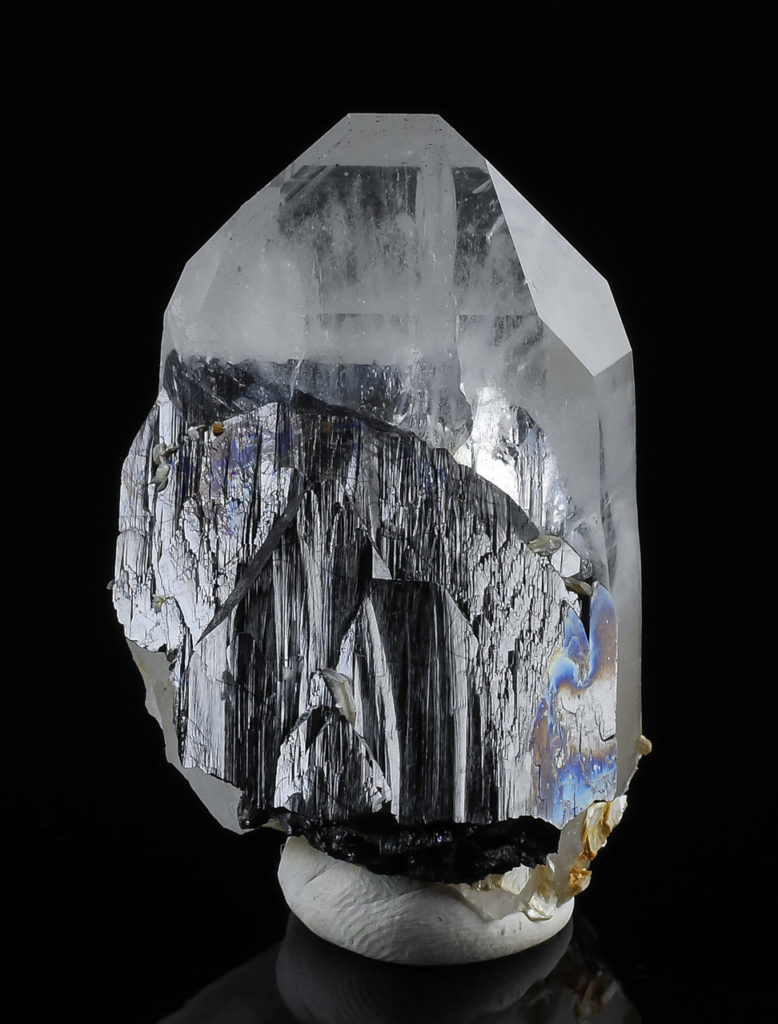The majority of China is resource-rich, although this varies with location. China is known widely for its production of fluorspar, copper, rare earth elements, coal, antimony, zinc, lead, iron, tin, tungsten, and others. China is the largest producer of fluorspar and rare earth elements in the world and has numerous mines to exploit both. Unfortunately, only mines of fluorspar produce specimens of interest to most collectors. The minerals produced at the rare earth mines around the city of Baotou in Inner Mongolia are not terribly flashy.

Though recovery of mineral specimens from mines seems to be a well known practice in China, there are well mineralized regions that produce both numerous specimens and relatively no specimens. Among those which have produced the most specimens are Hunan, Sichuan, Guangdong, Guangxi Zhuang, Guizhou, Fujian, Yunnan, and Hubei provinces. The provinces in the far north (Dongbei Region) and far west (Xinjiang Uyghur and Tibet autonomous provinces) have yielded little to no specimens. What has been seen coming from Xinjiang is exceptional- in the mid 2000’s for example a manganese mine near Urumqi produced some of the most magnificent red wulfenite ever seen. The find rewarded collectors with many amazing large cabinet specimens made from hundreds of scarlet, paper thin blades of wulfenite.

Recently, the province of Inner Mongolia has seen a surge in production of mineral specimens from the Huanggangliang mine- a skarn hosted iron and tin mine. This mine has a strikingly similar mineralogy similar to many of the famous mines in Dalnegorsk, Russia. The Huanggangliang mine is known for its nice garnets (grossular and andradite), calcite, green quartz, arsenopyrite, scheelite, fluorite, and many others. This mine has also given collectors many new specimens of exotic minerals, some defining the world’s best examples of a given species. The world’s best lollingite and borcarite crystals come from this mine. Also, several other mines in Inner Mongolia are starting to produce specimens inspired by the success of Huanggangliang.

There are some mines and/or mining districts in China which have likely produced over 100,000 mineral specimens. There are several that come to mind as exceptionally large producers. They are the Yaogangxian Mine in Hunan Province- a Sn-W-Ag-F mine that has produced some exceptional bournonites, fluorites, cassiterites, calcites, arsenopyrites, and many other minerals; The Wushan Spessartine Mine in Fujian Province- the source of the well known Chinese spessartine, quartz, and feldspar crystals; and the Xikuangshan Mine in Hunan Province- the world’s largest antimony deposit and a well known producer of giant stibnite crystals.
Perhaps the only kinds of mineral specimens that China lacks are large single crystals of quartz, zeolites, and pegmatite minerals. The pegmatites that do occur in China, to my knowledge do not produce many mineral specimens. There are some signs however that Inner Mongolia, Yunnan Province, and Xinjiang Uyghur Autonomous Region may have some promising pegmatites.
